Studio: Group Assessment
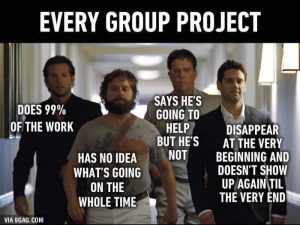 It’s time to assess your fellow group members from the edit project!
It’s time to assess your fellow group members from the edit project!
Go to https://goo.gl/forms/W3kbv3l2pZEsnkBZ2 and fill out the form by Monday, March 11th!
Posted in Movie and Video, Studio and tagged assessment, editing, group project by Adam Rauscher with no comments yet.
Video: Oscars Change Format
https://www.indiewire.com/2019/02/academy-oscars-abc-streaming-four-categories-during-oscar-show-commercial-breaks-1202043346/
The Academy of Motion Pictures Arts and Sciences run the Oscars. They have recently determined that during this year’s broadcast, editing and cinematography will be handed out during commercial breaks so the audience at home will not see them. How do you feel about this? Post in the comments.
Also, remember, the extra credit assignment for all three video classes is due on Tuesday next week. You can find it here:
Posted in Movie and Video, Movie Making, Studio, Video Production and tagged Academy Awards, cinematography, editing, Oscars, snub by Adam Rauscher with no comments yet.
Video Extra Credit Assignment
To get you through the rough weather, here is an extra credit assignment! It will be due Tuesday February 19th. It is worth up to 20 formative points. This is for all three video classes.
Watch one of the movies listed below (all are available on Netflix) and answer the question associated with it. Write at least two paragraphs. Your ability to cite specific details will affect your score.
The Third Man (1949), Not Rated – Pulp novelist 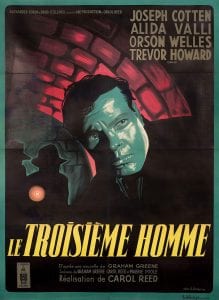 Holly Martins travels to shadowy, postwar Vienna, only to find himself investigating the mysterious death of an old friend, Harry Lime.
Holly Martins travels to shadowy, postwar Vienna, only to find himself investigating the mysterious death of an old friend, Harry Lime.
The introduction of Orson Welles’ character is often called the greatest character introduction ever. What techniques does the movie use before he appears and when he appears to make this so?
Schindler’s List (1993), R – In German-occupied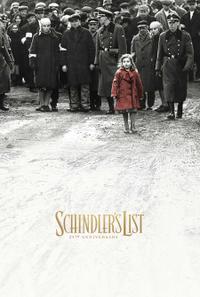 Poland during World War II, Oskar Schindler gradually becomes concerned for his Jewish workforce after witnessing their persecution by the Nazi Germans.
Poland during World War II, Oskar Schindler gradually becomes concerned for his Jewish workforce after witnessing their persecution by the Nazi Germans.
Critics praise Steven Spielberg and Janusz Kaminski’s use of color. How do their color choices underline the story, themes, and questions of the film?
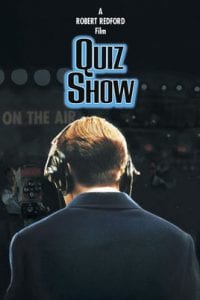 Quiz Show (1994), PG-13 – A young lawyer, Richard Goodwin, investigates a potentially fixed game show. Charles Van Doren, a big time show winner, is under Goodwin’s investigation.
Quiz Show (1994), PG-13 – A young lawyer, Richard Goodwin, investigates a potentially fixed game show. Charles Van Doren, a big time show winner, is under Goodwin’s investigation.
This is the film that put television on trial. How does the film try to emulate techniques of television (acting, cinematography, editing, music, set design)?
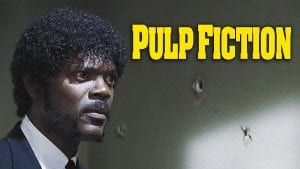 Pulp Fiction (1994), R – The lives of two mob hitmen, a boxer, a gangster’s wife, and a pair of diner bandits intertwine in four tales of violence and redemption.
Pulp Fiction (1994), R – The lives of two mob hitmen, a boxer, a gangster’s wife, and a pair of diner bandits intertwine in four tales of violence and redemption.
Pulp Fiction uses a MacGuffin, an object that has no meaning beyond being a plot point. Why did the filmmakers choose to never actually say what the MacGuffin is? How does this affect the movie?
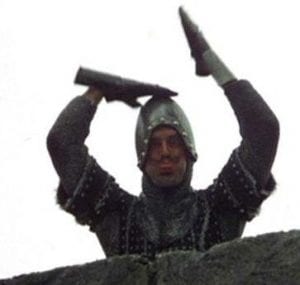 Monty Python and the Holy Grail (1975), PG – King Arthur and his Knights of the Round Table embark on a surreal, low-budget search for the Holy Grail, encountering many, very silly obstacles.
Monty Python and the Holy Grail (1975), PG – King Arthur and his Knights of the Round Table embark on a surreal, low-budget search for the Holy Grail, encountering many, very silly obstacles.
Great satire isn’t just references. It is critical of its source material. What does this film say about the Arthurian legend? How else does it criticize movies, stories and legends?
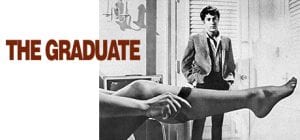 The Graduate (1967) – A disillusioned college graduate finds himself torn between his older lover and her daughter.
The Graduate (1967) – A disillusioned college graduate finds himself torn between his older lover and her daughter.
The Graduate made superstars of musicians Simon and Garfunkel. How does the movie’s use of music affect its mood, tone, and story? How does the music affect its place in history?
 Ghostbusters (1984), PG – Three former parapsychology professors set up shop as a unique ghost removal service.
Ghostbusters (1984), PG – Three former parapsychology professors set up shop as a unique ghost removal service.
Dan Akroyd (star and co-writer) is obsessive about the paranormal. How does the movie walk the fine line between seriously exploring supernatural events and mocking those who believe in them at the same time?
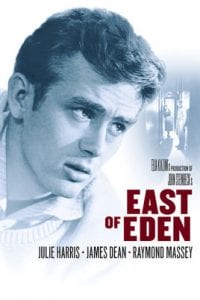 East of Eden (1955), PG – A willful young man contends against his brother for the attention of their religious father while reconnecting with his estranged mother and falling for his brother’s girlfriend.
East of Eden (1955), PG – A willful young man contends against his brother for the attention of their religious father while reconnecting with his estranged mother and falling for his brother’s girlfriend.
James Dean represented a departure from the strong silent types that starred in movies before. What types of choices in acting mark him as different?
Clerks (1994), R – A day in the lives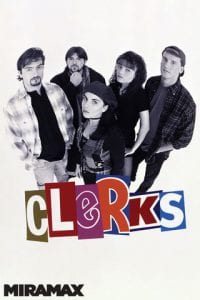 of two convenience clerks named Dante and Randal as they annoy customers, discuss movies, and play hockey on the store roof.
of two convenience clerks named Dante and Randal as they annoy customers, discuss movies, and play hockey on the store roof.
How does the low budget aesthetic (artistic style) of Clerks work with its story and characters?
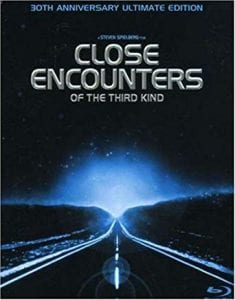 Close Encounters of the Third Kind (1977), PG – Roy Neary, an electric lineman, watches how his quiet and ordinary daily life turns upside down after a close encounter with a UFO.
Close Encounters of the Third Kind (1977), PG – Roy Neary, an electric lineman, watches how his quiet and ordinary daily life turns upside down after a close encounter with a UFO.
Close Encounters is very concerned with different languages. What languages and forms of communication are depicted? How do the themes and story relate to language?
Posted in Blogs, Movie and Video, Movie Making, Studio, Video Production and tagged acting, aesthetic, character, cinematography, Clerks, Close Encounters, Close Encounters of the Third Kind, Dan Akroyd, direction, East of Eden, editing, Extra Credit, film critique, Ghostbusters, introduction, James Dean, Janusz Kaminski, MacGuffin, Monty Python and the Holy Grail, music, Orson Welles, satire, Schindler's List, screenwriting, Shot Selection, Simon and Garfunkel, Steven Spielberg, television, The Graduate, The Third Man by Adam Rauscher with no comments yet.
Advanced Movie Making
Next week, we’ll be discussing the screenplay for the movie “Hot Fuzz,” if 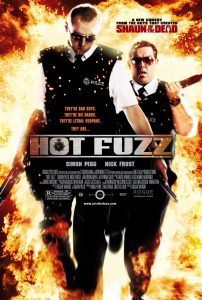 you’re able, please watch (or rewatch) the film by Monday. It’s available on Netflix as well as Amazon streaming, Google, and YouTube (for pay).
you’re able, please watch (or rewatch) the film by Monday. It’s available on Netflix as well as Amazon streaming, Google, and YouTube (for pay).
Posted in Movie and Video, Movie Making and tagged action, editing, film critique, Homework, hot fuzz, netflix, screenplay, screenwriting by Adam Rauscher with no comments yet.
Advanced Movie Making: Keyword Project
Working with your group, you will create a scene based on the 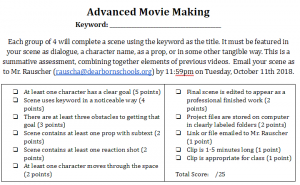 keyword “white.” This is a summative project, combining together previous concepts. The rubric is displayed at the right, but the due date has changed to 11:59pm on Sunday, October 14th, 2018.
keyword “white.” This is a summative project, combining together previous concepts. The rubric is displayed at the right, but the due date has changed to 11:59pm on Sunday, October 14th, 2018.
Posted in Movie and Video, Movie Making and tagged cinematography, direction, editing, group project, project, short film by Adam Rauscher with no comments yet.
Advanced Video: Color Palette Project
You have been put into groups. With your groups,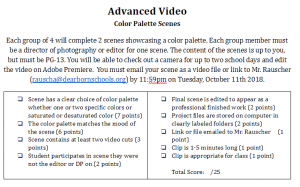 you’ll produce two scenes that highlight a color palette. You need to be the editor or cinematographer on one of these projects. Think about why you’re using that color palette and plan accordingly.
you’ll produce two scenes that highlight a color palette. You need to be the editor or cinematographer on one of these projects. Think about why you’re using that color palette and plan accordingly.
This site may provide inspiration: https://www.studiobinder.com/blog/how-to-use-color-in-film-50-examples-of-movie-color-palettes/
Posted in Movie and Video, Movie Making and tagged cinematography, Color, color palette, editing, group project, short film by Adam Rauscher with no comments yet.